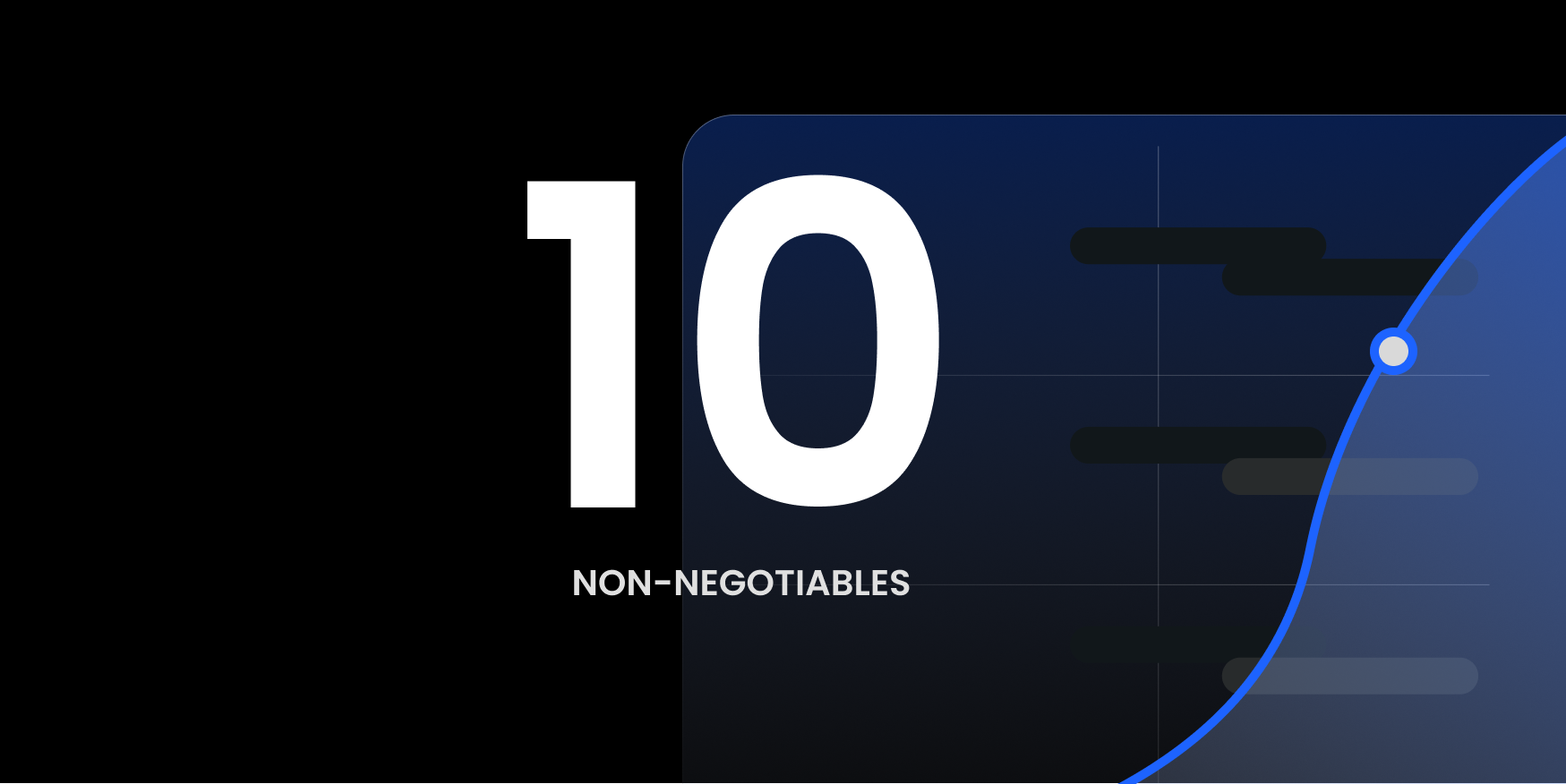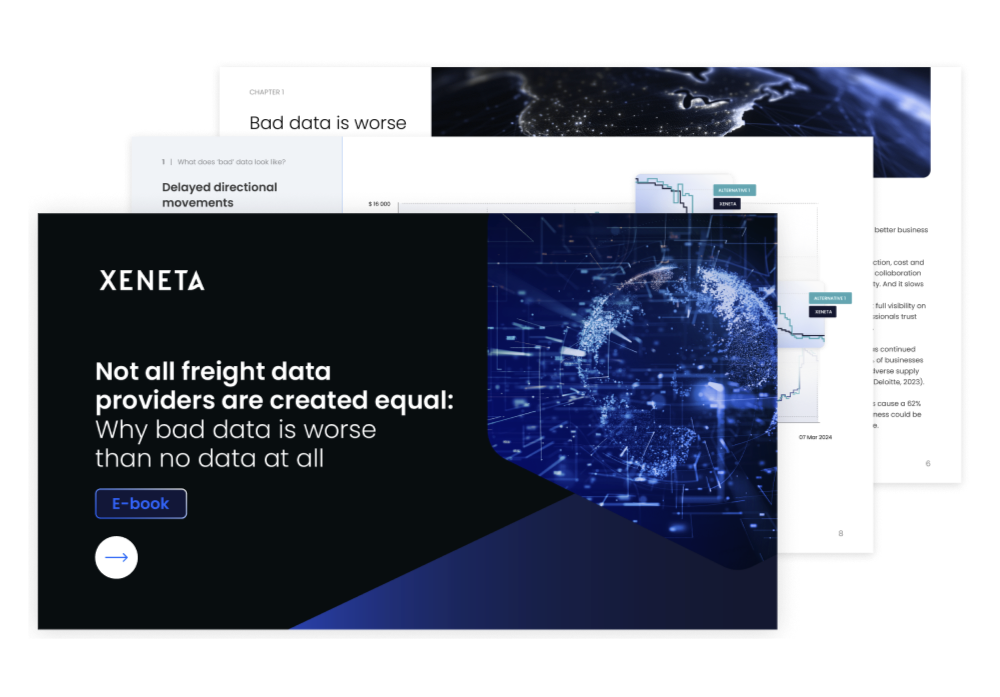If your job depends on being able to accurately forecast ocean or air freight budgets, negotiate freight rates on the spot-market and justify decisions to finance or senior management, you already know how important investing in the right freight data is.
Here are 10 non-negotiables to look out for when evaluating any freight data provider:
1. Real-time Market Updates
Anything less exposes you to risk, especially in a volatile market. When data is provided just weekly or monthly, you risk securing contracts when the market is against your favor – wasting time chasing rates that no longer exist (for example: relying on rates that sit 72% higher than the true market average).
2. Global Coverage: Beyond Corridors and Directional Trends
If you’re a global shipper, you need global data coverage — with separate views of short- and long-term rates. And yet, the majority of data providers offer no distinction between short- and long-term and limited port-port/airport-airport pairings. Others don’t provide port-port/airport-airport at all, limiting your view of the market to a corridor level, which can lead to poor decision making and missed opportunities.
3. Impartial Data, Free From Bias
It doesn't matter how granular or timely your data is if it's not neutral. Neutrality removes the risk of bias or skewed interpretations in the collection, analysis, and dissemination of data – providing you a true state of freight transportation to base decisions on. It also builds trust among stakeholders; including Shippers, Carriers and Regulators. Be sure to do your due diligence, or risk relying on data providers who choose to have Carriers on their boards, investments from Freight Forwarders, and/or advise on strategies and RFQs for your competitors.
4. Quality Aggregation (Trust the Source)
Before trusting the insights, you’ve got to trust the quality of the data being aggregated and assure there are no gaps in the underlying datasets. If the data sources contain errors, inaccuracies, or inconsistencies, it can lead to unreliable insights which in turn undermines decision-making.
Many freight data providers collect data primarily from small Freight Forwarders, or a mixture of BCOs, NVOCCs, and Freight Forwarders. This can skew the trend to represent only one segment of the market for example: skewing the trend 22% higher than the true market average at any given time. Some providers also merge uncorrelated ports without considering proximity, making it difficult for users to identify relevant trends, patterns, or correlations within the data.
5. Full Transparency of the Market
Full transparency means having a complete and comprehensive view of the market — from schedule reliability and carbon emissions to surcharges and spend benchmarks. Critical here is that split between short- and long-term markets and the spread of both. Most freight data providers combine spot and long- term rates, limiting users to a single view that delivers directional trends only.
6. Centralized Freight Intelligence (That Drives Alignment)
Centralizing your freight intelligence into a single platform will not only save you costs overall, it will allow your operations teams more flexibility to adjust to fluctuations in demand, shifting priorities, or unexpected disruptions.
The problem is, too many shipping organizations continue to spend budget on multiple, disparate systems and technologies for various aspects of their operations, and that’s because the freight data providers they choose to work with are unable to provide a single ecosystem for multiple datasets.
7. Supply Chain Resilience: Proactively Navigating Global Challenges
Global supply chains are constantly challenged by geopolitical events and market volatility, meaning only a dynamic, real-time platform is fit for purpose. Traditional providers use static analytical models or predefined algorithms that are not designed to adapt to rapid market changes. These methods overlook emerging trends, fail to capture sudden shifts in supply and demand dynamics, and struggle to predict future outcomes in a volatile environment – forcing you to be reactive and behind your peers.
8. Seamless Data Access for Unified Teams
You can’t unify teams around data that’s disjointed, siloed or not available when needed. Whether it's selecting transportation modes, optimizing routes, or negotiating contracts with suppliers, your team require access to a centralized ecosystem of freight intelligence that gives them the right data at the very moment they need it. And when this data sits at the heart of your supply chain decision-making, it will streamline cross-functional and global team operations to minimize fragmentation and enhance efficiency.
9. Staying Ahead of Your Peers
Shipping disruptions triggered by global events are leading to broader, longer-lasting changes in how organizations manage the flow of cargo. This includes implementing disciplines such as resilience, regionalization and supplier diversification. Companies can no longer afford to rely on conventional, some would argue complacent, supply chains. Instead, look for a freight intelligence partner who proactively delivers the latest innovations in end-to-end visibility and real-time, port-port/airport-airport shipping insights. The insights you need to continually compete in a notoriously opaque industry.
10. Absolute Accuracy: Confidence in Every Data Point
More than anything, you need to have absolute confidence in the data you’re relying on. This means investing in a platform that draws the widest breadth of crowdsourced, duplicate-free datapoints so you know the data is neutral, dependable, and as true a market average as possible (we think 450M datapoints is the best place to start).
What you want to avoid are providers who, when not enough sufficient data is collected, fill the gaps with ‘expert opinions’ and averages from existing data. Rarely do these providers clarify what is market data and what is an educated guess, leaving you with inaccuracies, inconsistencies, and unreliable insights.
.png?width=1950&height=2168&name=10nonnegotiables_visual%20(2).png)
*****
Traditional options or free indexes may seem like enough to base your strategy on, but they can easily create additional expenses through inefficiencies, errors, and missed opportunities.
Shippers who wish to optimize resilience in their supply chain can no longer afford to source freight data that doesn't align with or understand your strategic priorities and the value that accurate data has on your decision-making.
In other words, it will cost you more than if you just invested in a more advanced solution in the first place.
Want to dig deeper?
If you want to understand if your freight data provider is providing a true return on investment, download our latest eBook: "Not all freight data providers are created equal: Why bad data is worse than no data at all".
You’ll discover first-hand the return high-volume players gain after they stop compromising on their freight data and start investing in real-time freight intelligence instead.
Download your copy here.







